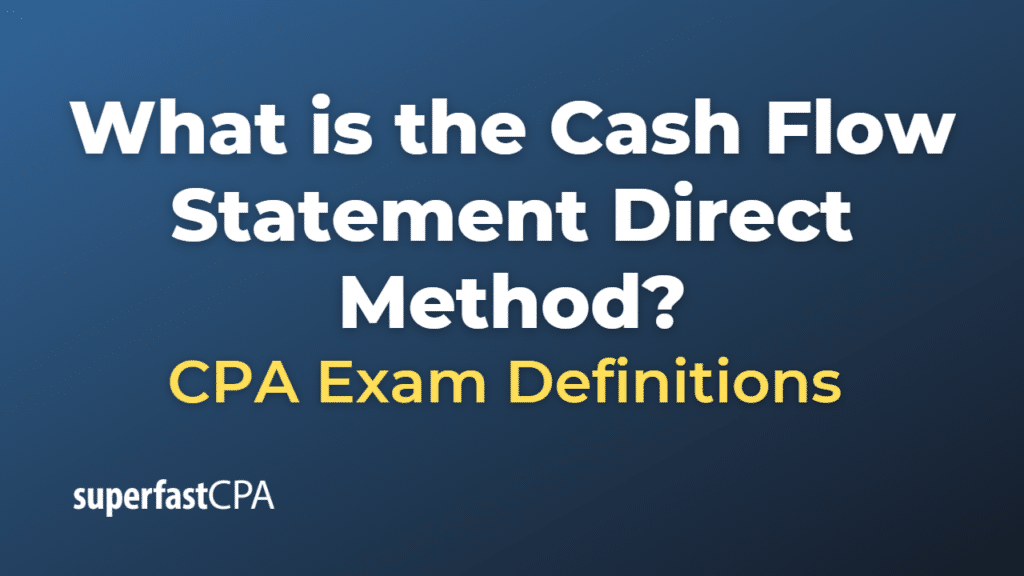Cash Flow Statement Direct Method
The cash flow statement direct method is an approach to preparing the statement of cash flows, which is one of the main financial statements of a company. The direct method provides a detailed presentation of cash inflows and outflows from the company’s operating activities, as opposed to the indirect method, which starts with net income and adjusts for non-cash items and changes in working capital.
Under the direct method, cash flows from operating activities are reported by showing major classes of cash receipts and cash payments, such as cash received from customers, cash paid to suppliers, cash paid for salaries, and other operating cash items. This method offers a clearer view of the actual cash transactions occurring within the business, making it easier to understand the company’s cash flow situation.
The structure of a cash flow statement prepared using the direct method typically includes the following sections:
- Cash Flows from Operating Activities: Lists cash inflows and outflows related to the company’s core business operations. Examples include cash received from customers, cash paid to suppliers, cash paid for salaries, and interest paid or received.
- Cash Flows from Investing Activities: Reports cash transactions related to the acquisition or disposal of long-term assets, such as property, plant, and equipment, or investments in other companies.
- Cash Flows from Financing Activities: Summarizes cash inflows and outflows related to the company’s financing activities, such as issuing or repurchasing shares, borrowing or repaying debt, and paying dividends.
- Net Increase (Decrease) in Cash and Cash Equivalents: Shows the overall change in the company’s cash and cash equivalents during the reporting period, calculated as the sum of cash flows from operating, investing, and financing activities.
Despite providing more detailed information about the company’s cash transactions, the direct method is less commonly used in practice, primarily because it requires more extensive record-keeping and can be more challenging to prepare. The indirect method, on the other hand, is more widely used due to its simplicity and its reliance on data readily available from the income statement and balance sheet.
Example of the Cash Flow Statement Direct Method
Let’s consider a hypothetical example of a company called TechCo and create a simple cash flow statement using the direct method for its operating activities during the year. The following financial data is available for TechCo:
Cash received from customers: $500,000
Cash paid to suppliers: $200,000
Cash paid for salaries: $150,000
Interest received: $10,000 Interest paid: $5,000
To prepare the cash flow statement using the direct method, we will list all major classes of cash receipts and cash payments for operating activities:
Cash Flow Statement (Direct Method) – Operating Activities:
- Cash inflows:
- Cash received from customers: $500,000
- Interest received: $10,000
- Total cash inflows: $510,000
- Cash outflows:
- Cash paid to suppliers: $200,000
- Cash paid for salaries: $150,000
- Interest paid: $5,000
- Total cash outflows: $355,000
Net cash flow from operating activities:
= Total cash inflows – Total cash outflows
= $510,000 – $355,000
= $155,000
This simple example demonstrates how the direct method presents the actual cash inflows and outflows from the company’s operating activities. Keep in mind that a complete cash flow statement would also include sections for investing and financing activities, which are not covered in this example.













